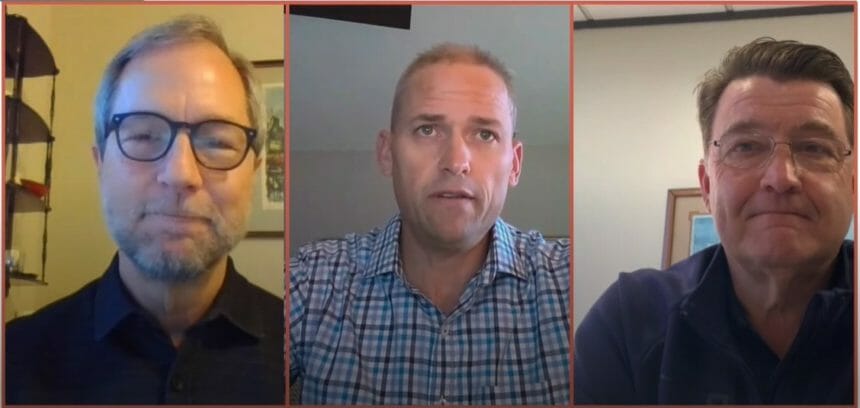
The world might be in the midst of a global pandemic, but the silver lining is, it’s a good time to plan new communities, expansions and repositionings, according to development and marketing experts speaking Tuesday at the LeadingAge Annual Meeting Virtual Experience.
With aging demographics “on our side,” Barry Johnson, executive vice president at Greenbrier Development, a Dallas-based senior living development and marketing firm, said there are opportunities on the horizon for senior living projects — it’s just going to take a little innovation in process and message to alleviate customer fears and provide flexibility. Johnson and his colleagues discussed those opportunities during a session.
Cole Gray, a Greenbrier executive vice president, said that most of the firm’s clients did not have the luxury of putting things on hold and waiting for a return to normal. During the pandemic, Greenbrier helped its clients through planning, development and marketing new or expanding senior living communities.
Challenges on the business planning side included uncertainties about key assumptions, availability and cost of capital, early supply chain disruptions, and construction escalation and timelines.
On the development side, the inability to have face-to-face meetings with planning commissions, city councils and neighbors affected by projects led to a lack of responsiveness from municipalities, resulting in extended project timelines, the panelists said. It also became challenging to keep participants engaged in the process, and construction cost increases tied to safety, scheduling, materials and subcontractors had to be overcome, they said.
“There are always uncertainties in the planning process and pitfalls you might face,” Gray said, adding that providers could benefit from a longer planning process and a softening construction market.
Tom Navin, Greenbrier’s chief operating officer, said that changing parameters and processes brought on by the pandemic had architects and engineers “design changing on the fly.” Building infrastructure upgrades included touchless solutions, HVAC systems, more robust IT systems, outdoor dining options and even UV lighting in ductwork to kill bacteria, he said.
“We are trying to incorporate changes that compliment current designs that can be maintained long term,” including introducing fresh air into environments, Navin said. “Better sequencing entering projects always helps with queuing and security; signage requirements always need to be considered, as we see many communities with out-of-control signage in many locations. Some of the changes and costs will, hopefully, be temporary.”
An unpredictable backlog exists on the construction side, Navin said, although he said he is seeing a softening in the market with middle-market multi-family projects being shelved due to unemployment effects.
Once the planning and development phase is complete, the sales and marketing challenges begin. The inability to meet in person or do tours and overcome negative perceptions, fear and uncertainty about the industry have been major challenges, according to the panelists.
“We knew when COVID hit, we had to act decisively,” Johnson said. “We also knew we had to put the ‘pedal to the metal’ and do everything with speed, yet we didn’t know where we were going or how we were going to get there.”
The typical ways of reaching out to tens of thousands of people quickly fizzled and were reduced to reaching out to one, Johnson said, calling it the “best sales training we could have had in a moment in time.”
Rather than calling prospective residents to make a sale, he said, sales teams were reaching out to see how individuals were doing and whether they needed anything. Without the pressure to sell, Johnson said, new relationships were formed and old relationships were rekindled.
What sales and marketing teams learned from COVID, he said, was to act decisively and with speed, acknowledge that a problem exists, validate a prospective resident’s concerns and reassure him or her that the project still offers peace of mind.
“Stay in the market. Change the message — and maybe the way it’s delivered — but stay in the market,” Johnson said. “Interest rates are low, houses are selling and prices are staying stable. When has there been a more important time to sell peace of mind? That’s what we should sell: peace of mind.”




